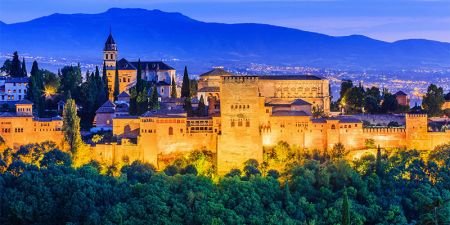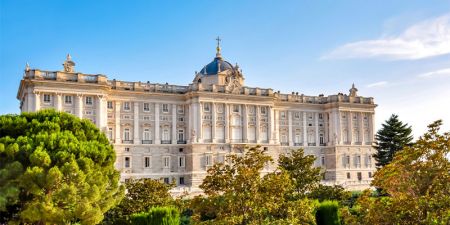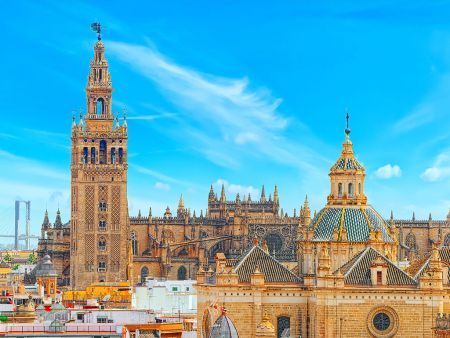Casa Milà
Dive into the rich history of Casa Milà, Barcelona's captivating landmark known as "La Pedrera" (the stone quarry). This article explores the vision of architect Antoni Gaudí that brought this masterpiece to life, uncovering its innovative features and the controversies it sparked. Discover how Casa Milà transformed from a residential building to a UNESCO World Heritage Site, and learn why it remains an iconic symbol of Barcelona today.
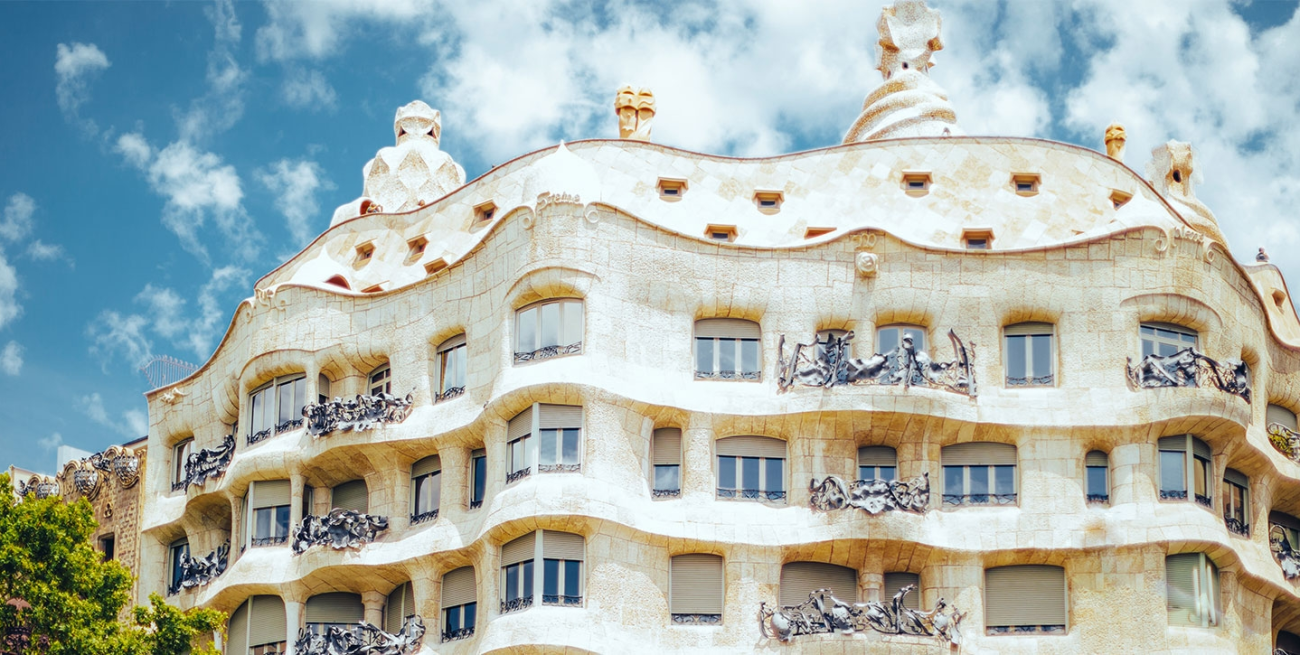
Nestled in the heart of Barcelona lies Casa Milà, an architectural masterpiece that captivates the imagination of anyone who lays eyes on it. This iconic structure, more commonly known as La Pedrera or 'the Stone Quarry,' stands as a testament to the creative genius of its creator, Antoni Gaudí. In this journey through Casa Milà, we shall delve into the history, architecture, and mysteries of this extraordinary building, offering you a glimpse into the mind of one of the most innovative architects of the modern era.
The History of Casa Milà, Barcelona's Iconic Stone Quarry
The story of Casa Milà begins in the early 20th century, a period of artistic and architectural revolution in Barcelona. Commissioned by Pere Milà and his wife Roser Segimon, Casa Milà was intended to be both a family residence and a bold statement of their status and progressive views. Construction commenced in 1906 and was completed in 1912, amidst much public debate and controversy over its unconventional design. Despite the initial skepticism, Casa Milà quickly emerged as a symbol of Barcelona's modernist movement, pushing the boundaries of architectural design and functionality. At the heart of Casa Milà's design philosophy was Gaudí's desire to harmonize the structure with its natural surroundings, a concept that was revolutionary at the time. The building's organic forms, inspired by the natural world, challenged the rigid geometric conventions of traditional architecture. Gaudí's innovative use of materials, such as the self-supporting stone facade and the intricate ironwork, further distinguished Casa Milà as a beacon of modernist architecture.
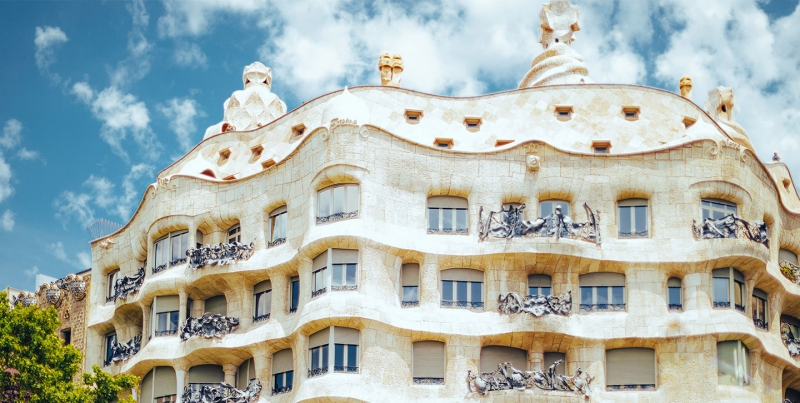
The Architectural Marvels of Casa Milà
Casa Milà's architecture is a marvel of innovation and beauty, showcasing Gaudí's genius in its full glory.
1. The Building’s Façade
The building's facade, resembling the undulating waves of the sea, is a striking departure from the linear contours of traditional buildings. This organic form, achieved through the use of a stone curtain wall, allows for natural light to penetrate the interior spaces, creating a dynamic interplay of light and shadow.
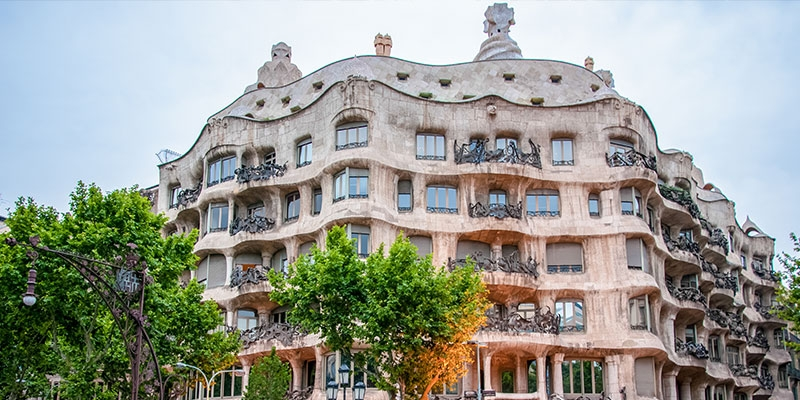
Customize Your Dream Vacation!
Get in touch with our local experts for an unforgettable journey.
Plan Your Trip2. The roof of Casa Milà
The roof of Casa Milà is another highlight, featuring whimsical chimney stacks and ventilation towers that have been likened to surreal sculptures. These elements not only serve a functional purpose but also add to the building's unique aesthetic, further blurring the lines between architecture and art.
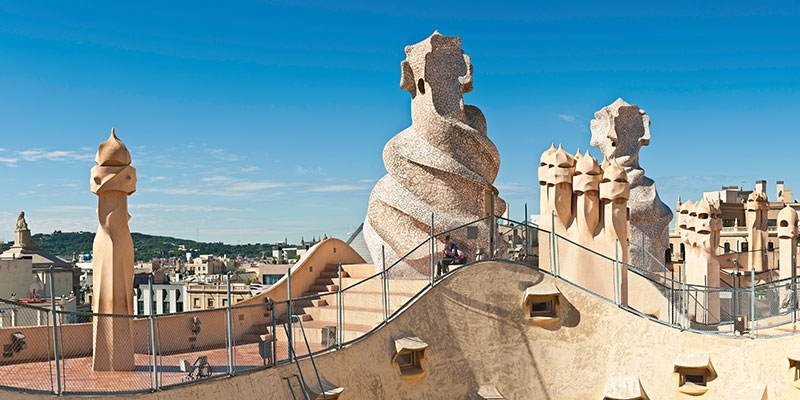
3. Inside Casa Milà
a) The main courtyard
with its sinuous walls and skylights, serves as the building's lung, providing ventilation and natural light to the apartments. This ingenious solution exemplifies Gaudí's commitment to creating healthy living environments, a theme that is recurrent throughout his work. The apartments themselves are a testament to Gaudí's mastery of space and light, with their flowing layouts and large windows that offer breathtaking views of Barcelona.
b) The attic of Casa Milà
once used as a laundry room, is now home to the Espai Gaudí, a museum dedicated to the architect's life and work. Here, visitors can explore a series of brick catenary arches, a structural form that Gaudí pioneered and perfected. The arches, which mimic the shape of a hanging chain, exemplify Gaudí's use of geometry and natural forms in his designs. The museum also features models, drawings, and photographs of Gaudí's other works, providing a comprehensive overview of his architectural legacy.
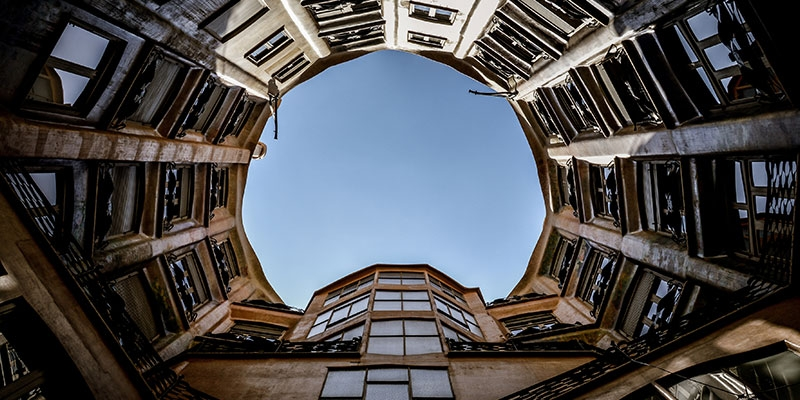
The Significance of "La Pedrera" in Casa Milà
Casa Milà, nicknamed "La Pedrera" due to its stone facade, is a beloved Barcelona landmark. Initially criticized for its unconventional appearance, it represents a departure from traditional construction techniques, allowing for greater interior design freedom and challenging architectural norms.
Casa Milà as a UNESCO World Heritage site
In 1969, Casa Milà was declared a National Historical-Artistic Monument. In 1984, UNESCO added it to the World Heritage Site "Works of Antoni Gaudí" alongside the Güell Palace, Güell Park, and the crypt of the Colonia Güell.
Visiting Casa Milà: What to Expect
Casa Milà, a Gaudí masterpiece, offers a captivating journey through its innovative facade and rooftop. Visitors can explore preserved apartments, witness the early 20th-century Barcelona lifestyle, and enjoy panoramic views from its iconic chimney stacks. Casa Milà hosts cultural events throughout the year.
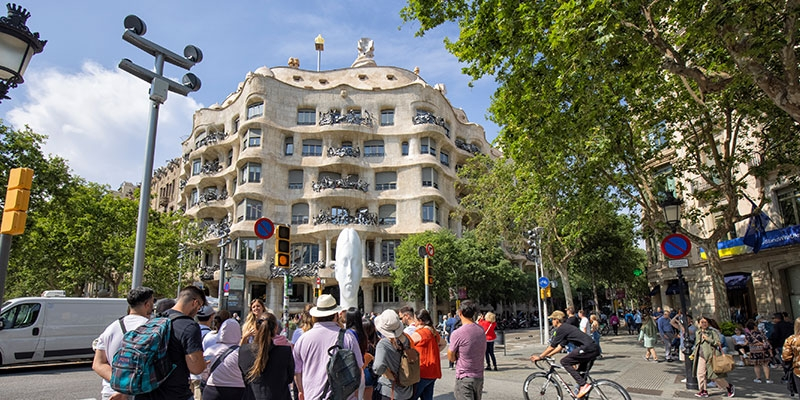
As we explore Casa Milà, we are invited to reconsider our own relationship with the built environment, to seek beauty in the unconventional, and to appreciate the genius of one of history's most visionary architects. The allure of Casa Milà, with its mysteries and controversies, its art and architecture, endures, captivating the hearts and minds of all who walk its halls. Don't miss the chance to visit Casa Milà!
FAQs:
1. What is the meaning of Casa Milà? The name, 'Casa Milà' means Mila's home which comes from the fact that it was the new home of the Milà family.
2. Where is Casa Milà? Casa Milà is in Barcelona, Catalonia, Spain.
3. When was La Pedrera built? Construction commenced in 1906 and was completed in 1912
4. Why was La pedrera built? Commissioned by Pere Milà and his wife Roser Segimon, Casa Mila was intended to be both a family residence and a bold statement of their status and progressive views.
5. How many apartments are in Casa Milà? 20 apartments
6. Does anyone still live in La Pedrera?
No, Nowadays La Pedrera is only used for tourist purposes. Author Ana Viladomiu was the last resident of La Pedrera, she has lived there for 33 years. Today, Viladomiu is the last resident of La Pedrera. She is the only tenant, with the exception of a woman named Carmeta who is never present.



